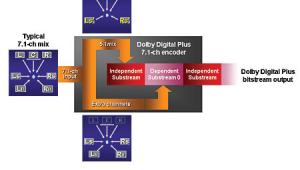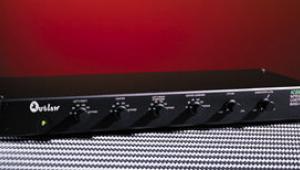Home Theater Boot Camp: Bass Management Page 2

While it's not as detrimental to your system's performance as not employing crossovers at all, making sure you don't employ multiple crossovers is also an important consideration. Whether to use the crossover system in your processor or your sub is a debate that must wait for another day (it essentially boils down to your equipment's capabilities), but the first step is making sure you use one or the other. If you have a crossover system in both components, you need to find out if either one has a bypass option. In the processor, this will usually be a setting buried somewhere in the menu (consult your manual). On the sub, the bypass option is usually in the form of either a separate set of inputs (labeled bypass or something of the sort) or a switch that will tell the sub to forego the crossovers for the main input. If you engage both crossover systems simultaneously, you'll run into a situation called cascading crossovers. This, in effect, is what happens when you employ multiple circuits in the signal path next to one another, which multiplies the effect that a single circuit would have produced. The result can be serious phase anomalies, drops in level (usually around 6 dB), and other noticeable problems.
The bottom line is to do your homework. The SACD and DVD-Audio formats have helped bring the bass-management issue to the forefront, and there's more information out there about it than ever before. Read the literature carefully for the gear you already have and make sure you ask the right questions about the gear you're looking to buy, including some of the issues that I've raised here. Not only will proper bass management help protect your system from damage, but it will improve your system's performance in ways you may have never thought possible. A proper investment in time and, in some cases, money to get your system's bass management right is an effort that will always provide positive results.
Although the masses have spoken and the situation is becoming rare, there are still SACD and DVD-Audio players on the market that don't offer proper bass management—and let's not forget about the earlier players, of which there's an even higher percentage that don't have it. As some of you who own these players may have already learned the hard way, virtually all receivers' and pre/pros' multichannel inputs bypass any bass management they offer. However, all is not lost if you find yourself in this situation. External bass-management systems are already showing up on store shelves, such as the LFE-3 unbalanced ($399) and LFE-4 balanced ($899) models from M&K and the ICBM-1 ($249) from Outlaw. True, these components require an extra outlay of cash and some extra cabling; however, when you consider the alternative, investing in them is a wise move. If you continue to run your system without proper bass management, you may very well end up spending a lot more to replace your speaker system, not to mention the fact that your ears may never forgive you.
- Log in or register to post comments






















































